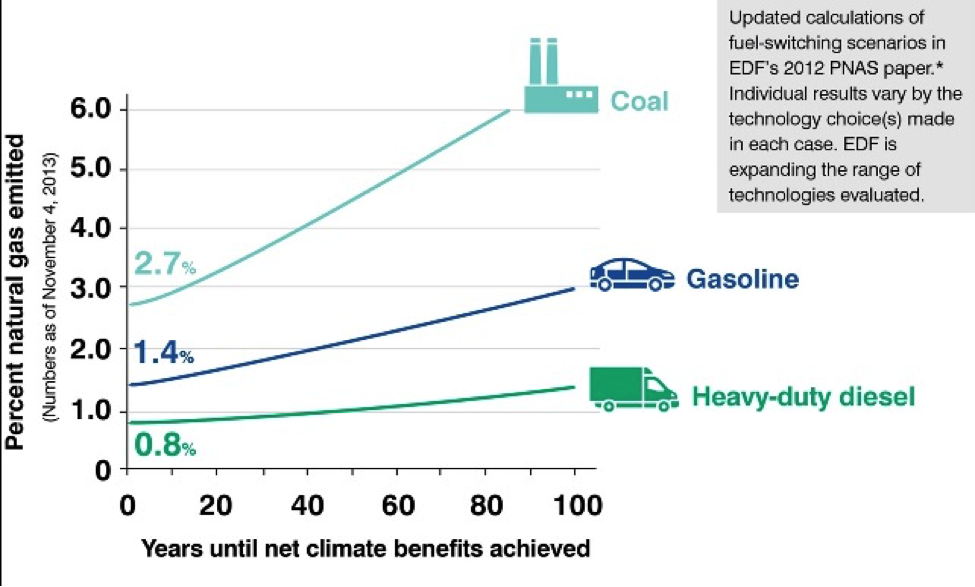By Brad Thacker
The fracking industry and most of its supporters – including President Obama and Colorado Governor Hickenlooper – tout natural gas (mostly methane) as a clean, green “bridge fuel to the future.” But as Professor Anthony Ingraffea stated in a talk at the Stop the Frack Attack summit in Denver last month, “natural gas is a gangplank to more warming.” Ingraffea, a civil engineering professor at Cornell University, explained in simple terms that by definition, a “bridge” requires a buttress at both ends, a span across some chasm or barrier, and a destination at the far end. In this case, however, the ‘bridge’ leads to an abyss. Ingraffea warned that the frantic rush to frack our way out of Climate Chaos is making the problem worse.
Methane’s contribution to Climate Change is complicated. On one hand, methane is a potent greenhouse gas that is 100 times more effective at trapping heat than carbon dioxide. On the other hand, methane’s concentration in the atmosphere is only about 1/200th that of CO2, plus it leaves the atmosphere much more quickly – its half life is ~ 12 years, versus CO2’s half life of ~100 years.
Scientists refer to a gas’s ability to heat the atmosphere as its “Global Warming Potential“ (GWP), which is factor of its heat-trapping ability and how long it remains in the atmosphere. According to the Intergovernmental Panel on Climate Change (IPCC), methane’s GWP is 84 times greater than CO2 over a 20 year period, but only 28 times greater over a hundred year period, because it quickly leaves the atmosphere and is gone after a century.
Ingraffea pointed out that the concentration of methane has risen rapidly (8%) over the past 25 years. One major factor contributing to this rise is the fracking frenzy that swept the US over the past 10 years. When burned in a natural gas power plant, methane produces about half as much CO2 as coal, which is why it is claimed to be a “green” fuel. However, at every stage of the production cycle – from drilling to end use – “fugitive methane” leaks into the atmosphere in its much more potent heat-trapping form, which the industry ignores when hyping its “greenness.”
In calculating methane’s contribution to Climate Change, Ingraffea points out that it’s critical to determine an accurate “leak rate” for methane production (the percent of escaping gas versus the amount produced and burned). Since fugitive (leaked) methane contributes much more to Climate Change than methane burned in a power plant, how “green” it is depends on how well it is contained before it is burned. The Environmental Defense Fund did a study that compares methane’s contribution to Climate Change vs. other fossil fuels such as coal, diesel, and gasoline. The graph below shows that, in the short term, the total methane leak rate must be less than 0.8% to be better than diesel, 1.4% to better than gasoline, and 2.7% to be better than coal. Because methane leaves the atmosphere in a few decades, leak rates averaged over longer times can be higher.

California IERP Presentation, Panel 2: Natural Gas Market Assessment and Methane Leakage, Timothy O’Connor, Senior Attorney / Director, California Climate (EDF), June 23, 2014
Given these comparisons, the actual methane leak rates must be less than those in the above graph for methane produced by fracking to put even the smallest dent in rising global temperatures, much less reverse the trend. Ingraffea teamed with another Cornell professor, Robert Howarth, to estimate the leak rate from fracking. They calculated leak rates from 3.6% to 7.9% (mean = 5.8%). If correct, these numbers show fracking to be worse for the climate than even coal – at time scales less than 80 years. Some recent studies support these numbers, although the calculated leak rates still vary widely, and more work needs to be done.
Ingraffea points out that US official policy set by the Obama Administration for methane regulation is based on the 100 year time frame. Using that time scale, methane leak rates can be much higher while still appearing “greener” than other fossil fuels. But are there downsides to using the longer time frame? Ingraffea answered that question with the graph below:
The squiggly black line shows the measured global temperature rise; the smooth colored lines are predicted temperature rises based on different mitigation measures (the effects of limiting CO2, methane, and black carbon (BC)).
The yellow horizontal band is the zone between 1.5° to 2° Celsius rise in temperature. The orange band above 2° is the point of no return – the temperature that scientists say will likely destabilize our climate and spin it into drastic, irreversible change for thousands of years.
The red line – only CO2 emissions are abated – glides past the 1.5° mark in 20 years, and the blue line – where CO2, BC, and methane are all abated – passes 1.5° in 40 years, well before the hundred year time frame on which US methane regulation is currently based. Ingraffea warns that US policy is based on reckless assumptions that lead to climate chaos, because once the 2° Celsius rise is reached, all bets are off.
We are waging our future on a gamble by the government and industry leaders based on long odds and bad assumptions. It’s time to take the fracking chips off the table and stop gambling with the lives of our grandchildren.


